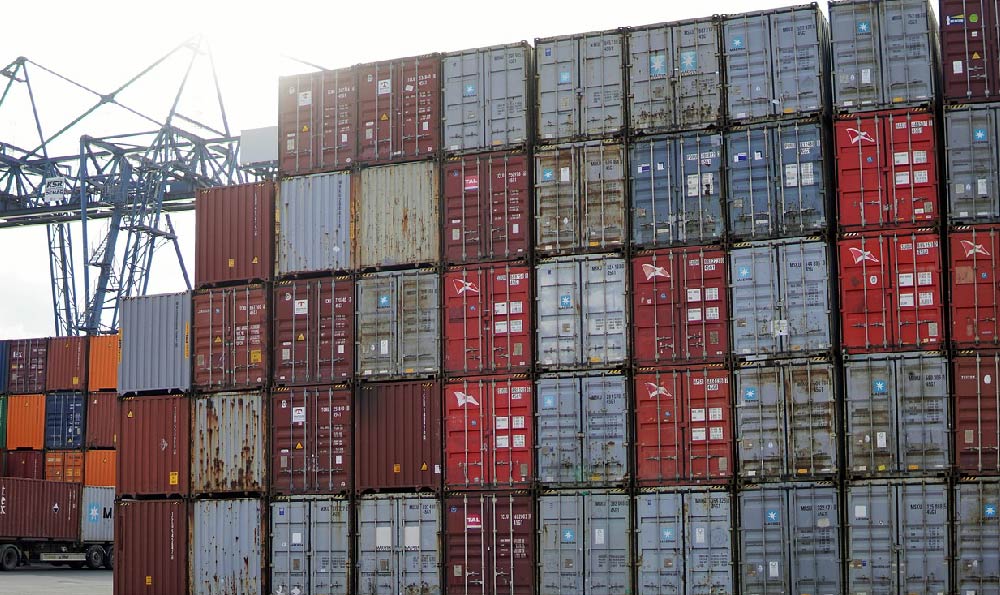
进口货物的航空货物运输流程是指将进口货物通过航空运输方式从国外运送到目的地的一系列步骤。该流程包括起点港的货物收发,运输途中的运输和安全管理,以及终点港的货物交付等环节。本文将以客观、专业、清晰和系统的方式,通过定义、分类、举例和比较等方法,详细阐述进口货物航空货物运输流程的相关知识。
1.起点港货物收发
起点港是指进口货物运输的起始地点,主要包括国外的货物发运港和进口货物的发货地。在起点港,货物需经过一系列流程,包括货物接收、验收、登记和打包等环节。货物接收是指航空货物运输公司或其代理人接收进口货物,并进行货物信息的登记和核对。验收是指对货物进行质量和数量的检查,确保货物符合运输要求。登记是指将货物信息记录在运输文件中,以备后续操作和跟踪。打包是指将货物进行适当的包装,以保护货物质量和安全。
2.运输途中的运输和安全管理
运输途中的运输和安全管理是指将货物从起点港运送到目的地的过程。这一过程涉及航班安排、运输路径选择、货物装载和卸载等环节。航班安排是指根据货物的数量和运输要求,确定合适的航班进行运输。运输路径选择是指根据货物的目的地和航线情况,选择最优的运输路径,以确保货物快速、安全地到达目的地。货物装载和卸载是指将货物装上飞机和在目的地卸下飞机,需严格按照操作规程进行,以确保货物的完好无损和安全性。
3.终点港货物交付
终点港是指进口货物运输的目的地,主要包括货物交付地和国内的货物收发港。在终点港,货物经过货物卸载、清关和交付等环节。货物卸载是指将货物从飞机上卸下,并进行货物数量和质量的核对。清关是指根据相关法规和程序,对进口货物进行海关审批和检验检疫,以确保货物合法进入国内市场。货物交付是指将货物交到货物收货人手中,并进行签收和确认,完成货物运输的最后一步。
进口货物航空货物运输流程是一个以起点港货物收发、运输途中的运输和安全管理、终点港货物交付为主要环节的流程。通过对该流程的客观、专业、清晰和系统的阐述,我们可以更加全面地理解和掌握进口货物航空货物运输的流程和要点。这对于提高货物运输效率、保障货物质量和安全具有重要意义。
疑似抄袭,以下为参考翻译结果,仅供参考:
Introduction
The import air cargo transport process refers to the series of steps to transport imported goods from foreign countries to their destination through air transport. This process includes the loading and unloading of goods at the origin port, transportation and security management during transport, as well as the delivery of goods at the destination port. In this article, we will objectively, professionally, clearly, and systematically explain the related knowledge of the import air cargo transport process using methods such as definition, classification, examples, and comparisons.
Text
1. Loading and Unloading of Goods at the Origin Port
The origin port refers to the starting point of the import cargo transport, mainly including the foreign port of shipment and the place of shipment of the imported goods. At the origin port, the goods need to go through a series of processes, including goods reception, inspection, registration, and packaging. Goods reception refers to the acceptance of imported goods by the air cargo transport company or its agent and the registration and verification of goods information. Inspection refers to the quality and quantity inspection of goods to ensure that they meet the transport requirements. Registration refers to recording the goods information in the transport documents for subsequent operations and tracking. Packaging refers to appropriately packaging the goods to protect their quality and safety.
2. Transportation and Security Management During Transport
Transportation and security management during transport refer to the process of transporting goods from the origin port to the destination. This process involves flight arrangement, transportation route selection, and loading and unloading of goods. Flight arrangement refers to determining the appropriate flight for transportation based on the quantity and transport requirements of the goods. Transportation route selection refers to selecting the optimal transport route based on the destination of the goods and the airline situation to ensure that the goods reach the destination quickly and safely. Loading and unloading of goods refer to loading the goods onto the aircraft and unloading them at the destination. It must be carried out strictly in accordance with the operating procedures to ensure the integrity and safety of the goods.
3. Delivery of Goods at the Destination Port
The destination port refers to the destination of the import cargo transport, mainly including the place of delivery of the goods and the domestic port of shipment. At the destination port, the goods go through processes such as unloading of goods, customs clearance, and delivery. Unloading of goods refers to unloading the goods from the aircraft and verifying the quantity and quality of the goods. Customs clearance refers to the customs approval and inspection of the imported goods in accordance with relevant laws and procedures to ensure that the goods enter the domestic market legally. Delivery of goods refers to delivering the goods to the consignee and obtaining the signature and confirmation, completing the final step of goods transport.
Conclusion
The import air cargo transport process is a process mainly consisting of loading and unloading of goods at the origin port, transportation and security management during transport, and delivery of goods at the destination port. By objectively, professionally, clearly, and systematically explaining this process, we can have a more comprehensive understanding and grasp of the import air cargo transport process and its key points. This is of great significance for improving the efficiency of goods transport, ensuring the quality and safety of goods.
画出航空货物运输出港流程
一、 航空货物运输的重要性

航空货物运输是国际贸易中至关重要的一环。随着全球化进程的加速,越来越多的企业选择航空运输来加快货物的速度和提高运输效率。根据国际航空运输协会的数据,全球航空货物运输量连续多年保持增长态势,航空货物运输正成为国际贸易发展的引擎。
二、 航空货物运输出港的角色
航空货物运输出港是连接不同国家和地区的重要枢纽。作为货物运输的起点或中转站,输出港承担着整个运输链条中至关重要的角色。在输出港,货物将进行安全检查、装载、分类和分拨,然后转运到目的地或继续中转。
三、 航空货物运输出港流程的第一步:安全检查
安全检查是保障航空货物运输安全的重要环节。在航空货物运输出港,所有货物都要经过严格的安全检查。这包括X光扫描和仔细检查货物的包装和标签,确保货物没有违禁品或危险物品。只有通过安全检查的货物才能继续运输。
四、 航空货物运输出港流程的第二步:装载和分类
在通过安全检查后,货物将被装载到相应的运输工具中,如货机或航空公司的货舱。货物装载时需要按照航空公司的要求和货物的特性进行分类,以确保货物安全并且方便后续的分拨和转运。
五、 航空货物运输出港流程的第三步:分拨和转运
在装载和分类完成后,货物将进行分拨和转运。在输出港,货物将根据目的地进行分拨,然后从不同的航班或航空公司转运到目的地或下一个中转站。这需要精确的计划和协调,以确保货物能够按时到达目的地。
六、 航空货物运输出港流程的第四步:目的地处理
一旦货物到达目的地输出港,将进行再次检查和处理。货物将再次接受安全检查,以确保货物在运输过程中没有受损或发生任何问题。货物将进行分拨,根据最终目的地或进一步中转进行处理。
七、 航空货物运输出港的挑战和机遇
航空货物运输出港面临着诸多挑战和机遇。随着航空货物运输量的增加,输出港的容量和效率成为关键问题。输出港需要不断提升安全检查技术和设备,以应对不断更新的安全威胁。输出港也面临着加强国际合作和协调的机遇,以提高整个货物运输网络的效率和可靠性。
八、 航空货物运输出港的未来发展趋势
随着航空货物运输的不断发展,输出港的未来发展趋势也值得关注。输出港将更加专注于提高运输效率和减少运输成本。采用更智能化的装载和分类技术、加强与其他交通方式的衔接和协同,以及提升数字化能力将成为输出港未来发展的关键方向。
九、 结语
航空货物运输出港流程是一个复杂而又精密的系统。只有通过精确的计划、高效的操作和先进的技术,输出港才能确保货物安全、高效地运输到目的地。随着全球物流的不断发展,输出港将继续发挥着重要的作用,并面临着新的挑战和机遇。
国内航空货物运输流程
一、航空货物运输概述

航空货物运输是指利用飞机进行物品的运输,具有快速、安全和准时的特点。国内航空货物运输业是我国物流行业中不可或缺的一部分,扮演着促进经济发展和满足市场需求的重要角色。本文将从国内航空货物运输的基本流程、运输网络和市场前景三个方面进行介绍。
二、国内航空货物运输流程
国内航空货物运输流程主要包括货物准备、货物装载、空运运输、货物卸载和目的地配送五个环节。货物准备阶段需要进行包装、标记和清关手续等工作,以确保货物的安全和合规。货物装载环节是将货物按照航空公司的规定进行分类、称重和装箱,确保货物的安全装载。承运航空公司将货物运往目的地,通过空运方式进行快速运输。货物卸载环节需要对货物进行检验和清点,以确保货物完好无损。货物到达目的地后,需要进行配送和交付给收货人,完成整个航空货物运输流程。
三、国内航空货物运输网络
国内航空货物运输网络由航空公司、货运代理商和物流企业等构建而成。在国内航空货物运输业中,航空公司是核心主体,其通过自有飞机和与其他航空公司的合作,形成一支覆盖全国的运输网络。货运代理商则负责与航空公司的联系和协调工作,提供货物接收、打包、装载和运输等全方位服务。物流企业也参与了航空货物运输网络,通过仓储和配送服务等,提供补充的综合物流服务。
四、国内航空货物运输市场前景
国内航空货物运输市场前景广阔。随着国内经济的快速发展和电子商务的兴起,航空货物运输需求持续增长。航空货物运输具有快速、安全和准时的特点,能够满足紧急货物和高价值货物的运输需求。国内航空货物运输市场还存在一些发展机遇,如航空货运物流中心的建设和优化、航空货物运输服务的创新等。可以预见,国内航空货物运输市场将持续繁荣发展。
国内航空货物运输流程是一个复杂而高效的系统,通过货物准备、装载、空运运输、卸载和目的地配送等环节,实现快速、安全准时的货物运输。航空货物运输网络由航空公司、货运代理商和物流企业等构建而成,形成了一个覆盖全国的运输网络。国内航空货物运输市场前景广阔,随着经济发展和市场需求的增长,航空货物运输将继续成为我国物流业的重要组成部分。













